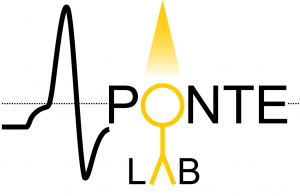Featured Paper of the Month – January 2024
Published in Current Biology by Brenton Laing and Yeka Aponte, et al. of the NIDA IRP Neuronal Circuits and Behavior Section.
Summary
Using techniques including in vivo functional imaging, behavioral paradigms, and neuronal tracing, Laing et al. investigated a small population of parvalbumin neurons in the anterior hypothalamic area (AHAPV). They demonstrated that AHAPV neurons are glutamatergic and project to the premammillary dorsal nucleus (PMD). Additionally, they found that AHAPV neuronal activity increases when mice are exposed to a predator and optogenetic activation of these neurons is aversive and evokes escape responding. Their study implicates AHAPV neurons as a novel, genetically identified circuit element mediating fight-or-flight responses.
Publication Information
Anterior hypothalamic parvalbumin neurons are glutamatergic and promote escape behavior Journal Article
In: Curr Biol, vol. 33, no. 15, pp. 3215–3228.e7, 2023, ISSN: 1879-0445.

